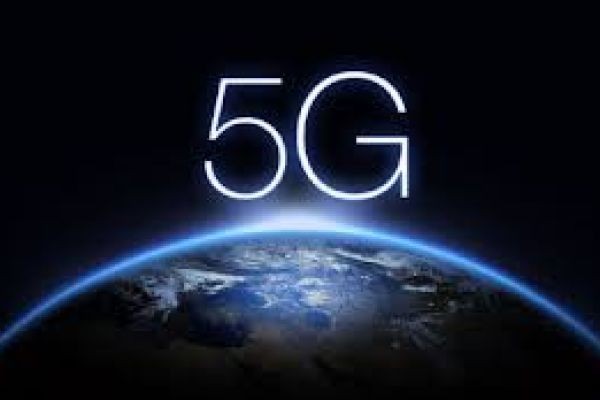5G Technology Market challenges and solutions for rural and remote region deployments globally address infrastructure limitations, high costs, and connectivity gaps. Sparse populations, difficult terrains, and long distances increase deployment complexity and operational expenses. Telecom operators and service providers implement innovative strategies such as small cell networks, satellite integration, and community-based partnerships to overcome these barriers. By leveraging technological advancements, policy support, and collaborative approaches, 5G networks can provide high-speed, low-latency connectivity to underserved areas, promoting digital inclusion and socio-economic development globally.
Infrastructure and Coverage Challenges
Rural and remote areas face significant challenges due to limited network infrastructure and geographic constraints. Deploying traditional macrocell towers is costly and often inefficient due to low population density. Difficult terrain, lack of power supply, and logistical issues further complicate implementation. To address these challenges, operators explore small cells, portable base stations, and hybrid network solutions to improve coverage. Innovative infrastructure deployment ensures that even the most isolated communities gain access to reliable 5G connectivity.
Cost Management Strategies
High deployment costs are a major barrier for rural 5G adoption. Telecom providers implement cost-effective solutions such as network sharing, multi-operator partnerships, and government subsidies to reduce capital expenditures. Utilizing open RAN (Radio Access Network) technology and modular equipment allows flexible deployment and scalability. By optimizing investment strategies, operators ensure sustainable operations while delivering high-speed connectivity to underserved regions. These approaches encourage market growth and digital inclusion in rural areas globally.
Satellite and Wireless Integration
Satellite technology plays a critical role in extending 5G coverage to remote regions. Low-earth orbit (LEO) and geostationary satellites provide backhaul support and direct connectivity where terrestrial networks are unavailable. Hybrid networks combining wireless, satellite, and fiber infrastructure ensure seamless service delivery and redundancy. These solutions enable real-time communication, data exchange, and IoT applications in areas with limited infrastructure. Integrating satellite networks with 5G technologies supports global connectivity and bridges the digital divide.
Power and Energy Considerations
Reliable power supply is essential for maintaining 5G networks in remote locations. Operators deploy energy-efficient equipment, solar-powered base stations, and battery backups to address power constraints. Renewable energy integration reduces operational costs and supports sustainable deployments. Optimized energy solutions ensure continuous connectivity for rural communities, enabling access to digital services, e-learning, telemedicine, and emergency communication. Energy-efficient deployments are critical for long-term sustainability and operational reliability in challenging environments.
Regulatory and Policy Support
Government policies and regulatory frameworks play a key role in facilitating rural 5G deployment. Subsidies, spectrum allocation, and incentives encourage operators to invest in underserved areas. Public-private partnerships and collaborative initiatives support network expansion and infrastructure sharing. Regulatory support ensures equitable access, compliance with safety standards, and alignment with national connectivity goals. Policy-driven strategies accelerate deployment, promote innovation, and enhance the reach of 5G networks in remote regions globally.
Community Engagement and Local Partnerships
Engaging local communities and forming partnerships with regional organizations is critical for successful 5G deployment. Local stakeholders provide insights into terrain, population needs, and logistical considerations. Collaborative initiatives enable resource sharing, workforce mobilization, and infrastructure maintenance. Community engagement fosters acceptance, adoption, and utilization of 5G networks, ensuring that digital solutions meet local requirements and provide meaningful benefits. These partnerships strengthen the impact of 5G technology in rural and remote areas worldwide.
Future Outlook
The 5G Technology Market will continue to address challenges in rural and remote region deployments through technological innovation, strategic investment, and collaborative approaches. Emerging solutions, including satellite integration, open RAN, and energy-efficient infrastructure, enhance coverage and reliability. Policy support and community engagement accelerate adoption and promote digital inclusion. Expanding 5G networks to underserved regions enables access to education, healthcare, commerce, and communication services, fostering socio-economic development. Continued innovation and investment ensure global connectivity, bridging the digital divide worldwide.
The 5G Technology Market faces challenges in rural and remote region deployments, including infrastructure limitations, high costs, and geographic constraints. Innovative solutions such as small cells, satellite integration, energy-efficient equipment, and collaborative partnerships address these barriers. Policy support, regulatory frameworks, and community engagement further facilitate deployment. Expanding 5G networks enhances connectivity, digital inclusion, and socio-economic development. By overcoming deployment challenges, operators and service providers ensure reliable, high-speed, and low-latency networks reach underserved areas, driving global adoption and technological advancement.

